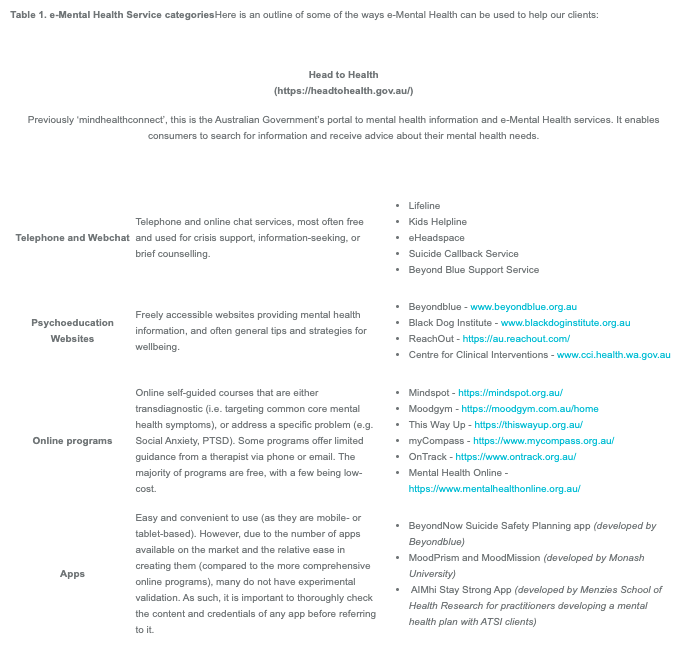As part of the Australian Government’s recommended stepped care model of mental healthcare, ‘e-Mental Health’ services (low-intensity online mental health interventions and resources) are becoming a much more important part of our mental health system.
With 1 in 5 Australians experiencing mental health difficulties, low intensity interventions can provide an ideal option for individuals with mild-moderate mental health symptoms where other options (e.g. psychologist referral, medication) might not be suitable. However, e-Mental Health services need not be an either-or choice when compared with face-to-face treatment. In fact, e-Mental Health services can fill multiple roles in the space between an individual seeking help from their GP and accessing treatment with a Psychologist, from initial psychoeducation and increasing acceptability of face-to-face services for first-time help-seekers, to crisis support between appointments, to providing interim support and brief intervention for busy periods where they may be on a waitlist.
Below is a brief guide to the range of e-Mental Health services available (Table 1), as well as an outline of the various roles e-Mental Health can play, and which services are most appropriate.
All listed programs have been developed by credible sources, such as the Australian Government, universities, and national nongovernment organisations.
1. As crisis support:Telephone and webchat services are a great option for clients to contact if they need immediate support out of hours or between appointments with their healthcare professional. Apps such as the BeyondNow Suicide Safety Planning app can help clients and their healthcare professional create a strong, structured plan for dealing with ongoing crises and distress.
2. Psychoeducation for first-time or hesitant help-seekers:
- Head to Health, the government’s mental health information portal, is a great place to direct clients to in the first instance.
- Psychoeducation websites are fantastic tool for providing information about general stress and wellbeing, specific diagnoses (e.g. generalised anxiety, eating disorders), or specific problem areas (e.g. parenting, relationship issues, work stress) to first time help-seekers.
- Online programs (particularly the transdiagnostic programs that don’t focus on a specific diagnosis, such as myCompass) are a great option for help-seekers who are hesitant or uncertain about face-to-face mental health intervention.
3. Interim support:
If clients are on a waitlist or aren’t able to access timely support due to situational circumstances, online programs and apps can provide a great option to help them start working on their wellbeing in the meantime (which also means they can hit the ground running when they are able to commence face-to-face intervention).
4. To complement face-to-face treatment:
Online programs and apps can help build on the skills being taught in therapy, such as CBT strategies, mindfulness and positive psychology. Whilst using these resources as a complementary tool can involve a little extra work on the part of the clinician (i.e. to be able to get to know the programs available and find ones that complement their work), it can really help to strengthen and reinforce the work done in session.

